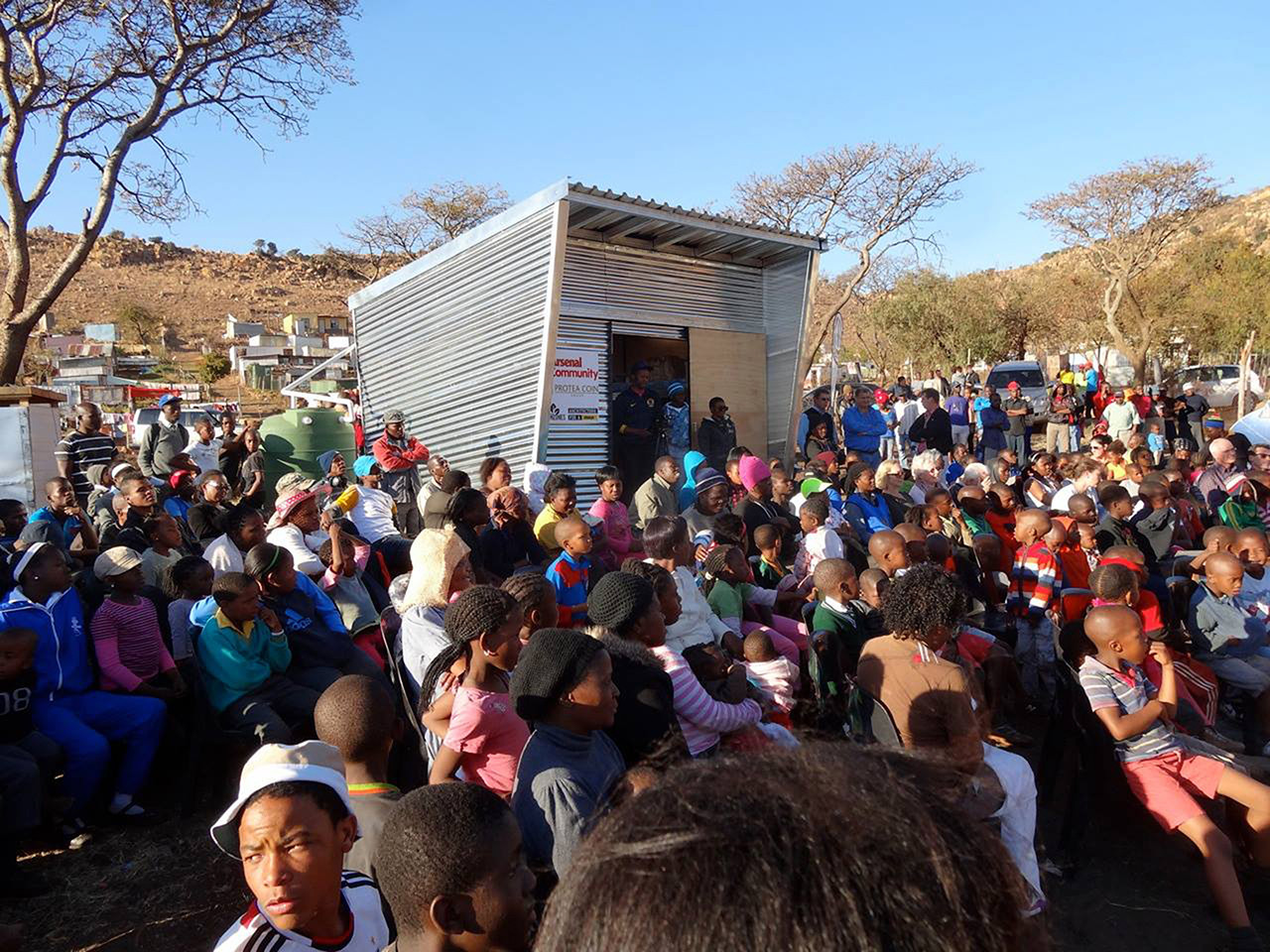
-
Architects: Architecture for a Change
- Year: 2013
-
Photographs:Architecture for a Change (PTY) LTD

Text description provided by the architects. The project entailed the design and construction of a small housing unit in the informal settlement Mamelodi, Pretoria, South-Africa. The design fills the gap between informal and formal housing. South Africa has 2700 informal settlements with millions of inhabitants living in substandard conditions. Many of these informal settlements don’t have water supply, electrical connections or storm water removal systems. Most housing structures built in informal settlements are built from zinc sheets and unsafe structures. It is a big challenge to erect formal housing for this big mass.

The Pod is a solution within the informal context. Its aesthetic still presents itself as a zinc building, but its thermal and environmental performance is that of formal housing. It is prefabricated and erected in minimal time, which provides the opportunity of mass housing solutions.

The unit is also completely off the grid which enables the unit to be placed on site where infrastructure isn’t available. Its shape is efficient as it provides external shading, eliminates complex corner details and external seating. The structure is suspended from the ground to preventing flooding and waterproofing issues.

The structure is equipped with a PV panel that charges a battery unit. This system powers 4 internal lights, 2 external LED strip lights, and a 12V charger. The surrounding area doesn’t have any electrical supply. The unit is fitted with a skylight, which saves energy on lighting. The gutter is connected to a 1000L water tank. Water supply is scare in the area and many people have to transport their water in buckets to the informal homes. Mamelodi has a high rainwater fall rate in the summer.

The tank water is used for subsistence farming and washing. The composite wall consists of and exterior zinc layer, a Sisolation layer (reflective foil material), an Isotherm layer and an internal plywood layer. The informal homes in the area are built of zinc only walls (extremely cold in winter, and extremely hot in summer).

The walls of the unit have a better thermal performance than a double masonry wall. All the edges and corners are sealed with rubber strips. The window and skylight are also custom made, with a double Thermoclear skin for optimal insulation levels.

A minimum team of 3 is needed. The total erection took less than one day.




















